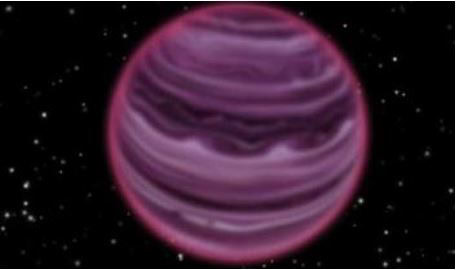Imagine a distant, sunless world where it rains molten iron and its clouds are made of super-hot dust. This is what a team of researchers, led by the University of Edinburgh, have found.
The relatively young planet – just 20 million years old – called PSO J318.5-22, had not yet been born when dinosaurs roamed our Earth. It does not orbit a star, i.e. unlike Earth, it has no sun.
Dr. Beth Biller, study leader, who works at the School of Physics and Astronomy at Edinburgh University, and team say their findings may help improve how scientists determine what weather conditions in distant planets are like, especially those that might sustain life as we currently know it.
 PSO J318.5-22 is a sunless world, with super-hot clouds and molten iron rain.
PSO J318.5-22 is a sunless world, with super-hot clouds and molten iron rain.
The research team, who published their study in The Astrophysical Journal Letters, used a telescope at La Silla Paranal Observatory in Chile, run by the European Southern Observatory, to gather data on the distant planet-like object’s weather systems.
As it rotated over a period of five hours, they captured hundreds of infra-red images.
Covered by ultra-hot clouds
The scientists compared its brightness with other bodies in the area and found that it is covered by many layers of thin and thick clouds. As PSO J318.5-22 rotates, the clouds cause its brightness to change.
PSO J318.5-22, which is 74 light-years away, is about the same weight as Jupiter – the biggest planet in our solar system. However, it is much less dense and covers eight times Jupiter’s area.
The clouds on this planet-like object are ultra-hot inside – exceeding 800 degrees Celsius.
Dr. Biller and colleagues were able to accurately measure the planet’s brightness and changes in brightness because it has no sun. Stars emit huge amounts of light, making it very hard to measure the brightness of the planets that orbit them.
 Dr. Beth Biller – Chancellor’s Fellow in Astronomy. Her research interests include the direct detection of extra-solar planets, the properties of brown dwarfs and extra-solar planets, planet and star formation, high contrast imaging, and adaptive optics. (Image: roe.ac.uk)
Dr. Beth Biller – Chancellor’s Fellow in Astronomy. Her research interests include the direct detection of extra-solar planets, the properties of brown dwarfs and extra-solar planets, planet and star formation, high contrast imaging, and adaptive optics. (Image: roe.ac.uk)
Studying planets that do have a sun
The research team believes their technique can be adapted to study planets that orbit stars. The technique could be used to study cooler, denser planets, where there is more likely to be life as we know it.
Dr. Biller commented:
“This discovery shows just how ubiquitous clouds are in planets and planet-like objects. We’re working on extending this technique to giant planets around young stars, and eventually we hope to detect weather in Earth-like exoplanets that may harbour life.”
The study, which was funded by the UK’s Science and Technology Facilities Council, was carried out by scientists in the US, Scotland, Germany, France, and Spain.
Reference: “Variability in a Young, L/T Transition Planetary-Mass Object,” Niall Deacon, Beth A. Biller, Mickaël Bonnefoy, Johanna Vos, Mariangela Bonavita, Michael C. Liu, Esther Buenzli, Claire Baxter, Katelyn Allers and Ian J. M. Crossfield. The Astrophysical Journal Letters. October 30, 2015. DOI: http://dx.doi.org/10.1088/2041-8205/813/2/L23.
